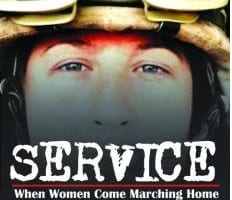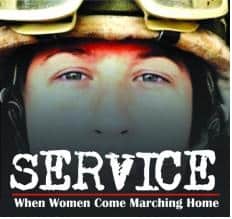
Kamen works as a lifestyle management consultant who explores the art and science of happiness as a speaker, author, and positive psychology expert. Through her globally syndicated podcast, books, media appearances, and documentary film, Lisa has impacted millions of people around the world.
LISA CYPERS KAMEN
meet your host
leave a review
With Lisa Cypers Kamen
Airs Wednesday, June 20th 2013
Originally published in The Huffington Post

PTSD is an epidemic. It affects American servicemen and servicewomen of all backgrounds, all ages and all military titles. But in recent years, the prevalence of PTSD has increased among our female Veterans, sitting around 20 percent according to the Department of Defense. Among male Iraq and Afghanistan Veterans, most sources put the rate somewhere between 14 and 18 percent. But with more women joining the front lines, this rate is bound to increase, and fast. We owe it to our female Veterans and our active duty servicewomen to learn more about how PTSD affects them.
Here’s what we know now: Even after the ban disappears, women may still be less exposed to the front lines. But at the same time, women are much more likely to suffer Military Sexual Trauma, also called Military Sexual Violence. These experiences of sexual assault or repeated, threatening acts of sexual harassment are closely linked to PTSD. In one study of Korean War Veterans, exposure to sexual assault put an individual at a higher risk for PTSD than combat. More than 50 sexual assaults occurred per day between October 2010 and September 2011, and women were by far the most common victims. One-third of our active-duty servicewomen say they have experienced MST.
When women develop PTSD, they often experience different symptoms than men do. Women suffering from PTSD are more likely to develop anxiety and depression than men are. But at the same time, it’s also less common for women to develop the substance abuse and violent tendencies that often plague men living with these invisible wounds of war. No one has discovered exactly why, but many researchers say the differences boil down to the biology of men and women’s brains.
Luckily, there’s a silver lining to the story. Women are more likely to develop PTSD because of MST and their biological reactions to fear, but they’re also more likely to seek treatment. In my experience counseling Veterans, my female warriors tend to walk in on day one more comfortable showing their true range of emotions. My male Veterans also find success with positive psychology, but it often just takes a little extra work to get there. Other data shows that women are naturally more conditioned to be intimate and draw from a larger range of coping strategies.
As the ban on women in combat gets officially lifted, our female active-duty personnel and Veterans will likely become even more susceptible to PTSD. The high instances of trauma seen on the front lines and the significant likelihood of sexual trauma at the hands of military personnel are two critical hurdles for the health of our servicewomen.
Without more concrete research on how women develop and cope with PTSD, our female warriors will continue to face these insurmountable hurdles. The more we know, the better we can serve them.
WANT MORE?
Nothing gives happiness like a free gift...
Sign-up, stay connected, be gifted access to a free meditation video, and receive our monthly Happiness Headlines eZine.
No spam, we promise. We don’t share your information. Get updates on special offerings, events and optimal lifestyle management tips.
Nothing gives happiness like a free gift...
Sign-up, stay connected, be gifted access to a free meditation video, and receive our monthly Happiness Headlines eZine.
No spam, we promise. We don’t share your information. Get updates on special offerings, events, and optimal lifestyle management tips.
Resources
Explore
CONTACT
ABOUT
EPISODES
SHOP
Visit Harvesting Happiness
PRIVACY POLICY
Our communications do not constitute mental health treatment nor is it indicative of a private therapeutic relationship.
Individuals seeking help for trauma related issues or other psychological concerns should seek out a mental health professional.
© 2010-2025 Harvesting Happiness Talk Radio
Website Design by Nadia Mousa